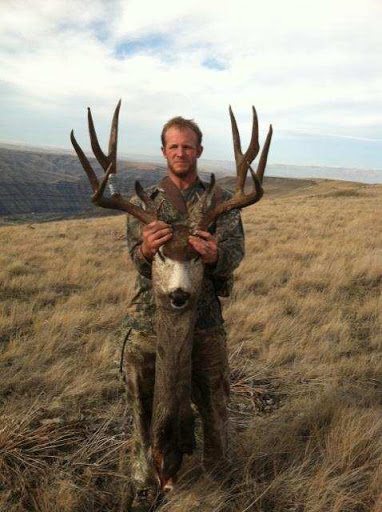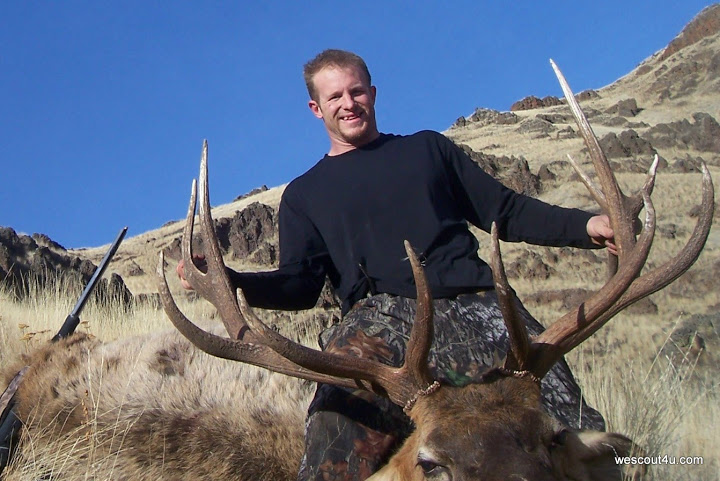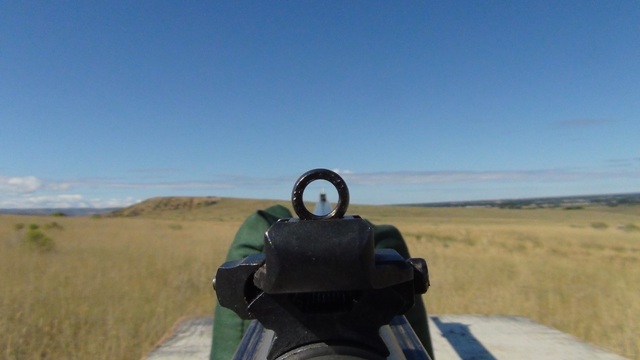
Maximizing your Muzzleloader with Peep Sights
By Jim Carr, Rokslide Member
I have always had an obsession for hunting and have hunted for years both archery and rifle. I first decided to start muzzeloading due to the extended muzzleloader seasons as well as the challenge. I live in Idaho where we have traditional muzzleloader restrictions for our muzzleloader-only seasons.
• Open ignition system
• Open sights
• Percussion caps (musket or #11)
My first purchase was an Idaho legal inline, the Knight Bighorn.
It came with standard dovetail sights mounted about halfway down the barrel. When I took it to the range and started shooting, I quickly discovered a problem with the standard open sights; at 100 yards I had to use a paper plate-sized target to find an aim point, as the site covered the whole target. While I was able to shoot just fine, I quickly realized that 100-125 yards was about max range so I started looking at other options.
Peep Sights
The first and only option I came up with was putting on a peep sight. When I was younger I had an M1A National Match rifle with a rear adjustable peep sight. I remember being able to ring the gong repeatedly out at 500 yards. I checked the selection at the local Cabela’s and the one peep sight they had was a Williams. I purchased it and mounted it to the rear of the rifle and took it to the range. What a difference! My groups shrank immediately and I was now shooting approximately 1.5 inch groups at 100 yards.
I noticed, too, how much more of the target I could see when compared to the dovetail. The peep also how quickly I was able to get on target when looking through the peep; it seemed to pull my eye right to the front sight. When you see the front sight, it’s automatically centered, so no more having to line the front with the rear.
The Knight Bighorn came standard with a fiber optic front sight which when used with the peep allows me to acquire my target faster and keep my hold on target better than any rifle I’ve fired, especially from an offhand position. The biggest difference, in my opinion, is the sight picture on deer sized targets. The dovetail takes up a lot of the animal horizontally when you get out to about a 100 yards whereas with the peep you can see all around the front sight, making it much easier to pick a more precise spot on the animal.
In the Field
I made my first muzzleloader hunt in late November for Elk, and since we already had a freezer full of elk meat I decided to hold out for a trophy. The first day I only got on small bulls and cows. Day two was foggy, so I hiked out a ridge for several miles and dropped down into a canyon. As soon as I came down out of the fog I spotted a group of 10 or more bulls with two shooters, one of which was a really good bull. I sneaked down on them to get within range, deciding to wait for the big bull to stand up. Suddenly another bull I hadn’t noticed off to my right busted me and they all took off. The big bull didn’t offer a shot but the next best one ran through a small opening in the cover and I was able to quickly acquire him through the peep sight and drop him, a shot that would have been near impossible, even with a scope.

I later got my best buck with this muzzleloader in a similar scenario that required a follow up shot while we were both running. Besides accuracy, peeps generally allow faster target acquisition. Every animal I have taken with this muzzleloader has been offhand including another bull at 241 yards. I credit the ease of offhand shooting to the peep sight setup.
In closing, one issue I found with peep sights is snow, ice, and even rain becoming lodged in the peep. This can cause a big problem when quick shots are needed, and has cost me more than one good bull up here in thick snowy Northern Idaho. You have to make a conscious effort to keep your peep site clear just like you need to remember to change musket caps frequently.
Extended Range Muzzeloading
I started to realize that this muzzleloader was capable of shooting even further than 125 yards. I started practicing holdovers, and while it worked out to 175 yards, I found that the drops with these big slow bullets are too much beyond that. I began researching and ended up being able to shoot accurately out to 300 yards and beyond. You can read that article here, Extended Range Muzzeloading.
You can discuss this article or ask the author questions here.



















